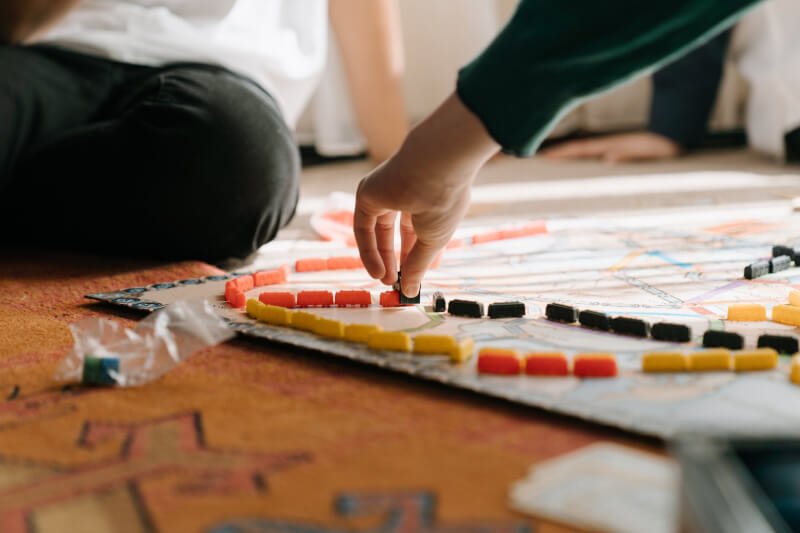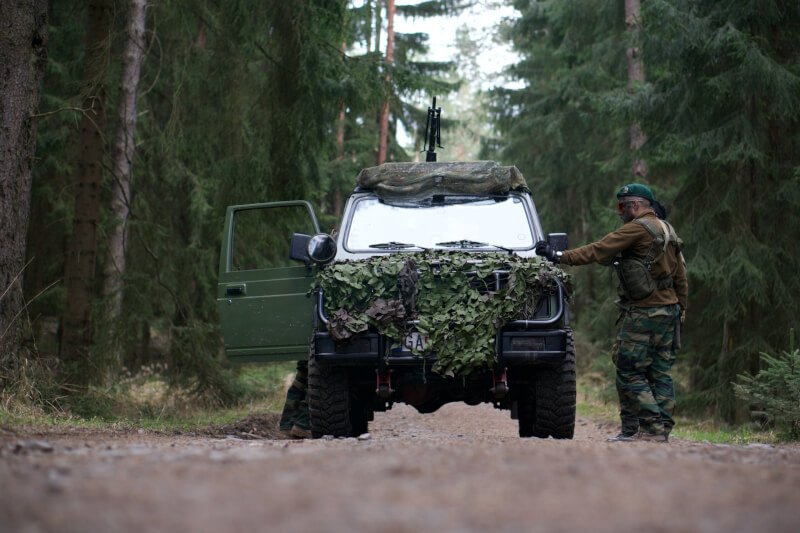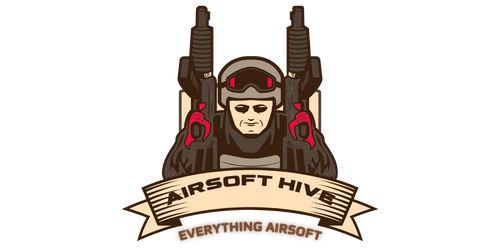Are you looking to up your game in Airsoft? Well, look no further! In this article, we will explore the power of suppressive fire and how it can give you a significant tactical advantage on the battlefield. Whether you are a seasoned player or just starting out, understanding the art of suppressive fire can make all the difference in your performance. So, grab your gear and get ready to learn how to dominate the Airsoft field like a pro!

Definition of Suppressive Fire
Suppressive fire refers to a military tactic that involves the use of continuous and rapid gunfire to suppress enemy movement and limit their ability to return fire. It is a crucial strategy in airsoft, a recreational shooting sport that simulates military combat using replica firearms. In airsoft, suppressive fire serves as a means to gain a tactical advantage and control the battlefield. By effectively utilizing suppressive fire, players can manipulate the psychology, movements, and positions of their opponents, ultimately enhancing their chances of success.
Explanation of Suppressive Fire in Airsoft
In the context of airsoft, suppressive fire is a key aspect of gameplay. It involves strategically utilizing high-volume and sustained fire to hinder the enemy’s ability to engage effectively. Rather than focusing solely on aiming to eliminate adversaries, suppressive fire aims to dominate the field and disrupt the opposition’s actions. It creates an atmosphere of chaos and uncertainty, making it more challenging for opponents to maneuver or mount counterattacks. By keeping the enemy on the defensive, suppressive fire enables a team to gain an upper hand and execute their strategy more efficiently.
Importance of Suppressive Fire in Gaining a Tactical Advantage
Suppressive fire plays a pivotal role in airsoft, offering several advantages that can significantly impact the outcome of a game.
Creating a Psychological Effect on Opponents
The psychological effect induced by suppressive fire is its greatest strength. The intense noise, constant barrage of projectiles, and the feeling of being trapped render opponents hesitant and cautious. This psychological pressure instills fear and uncertainty, which can cause adversaries to make mistakes, hesitate during crucial moments, or even retreat. By exploiting this fear, players employing suppressive fire can sway the outcome of engagements in their favor.
Forcing Opponents into Defensive Positions
Suppressive fire is effective at influencing opponent movements, as it restricts their ability to maneuver and attack. The continuous stream of fire makes it risky for adversaries to expose themselves, pushing them into defensive positions and limiting their options for offensive action. By forcing opponents to take cover, suppressive fire restricts their vision and restricts their communication, making it easier for the suppressing team to control the battlefield and coordinate their own movements.
Providing Cover for Advancing Teammates
Another essential function of suppressive fire is its ability to provide cover for advancing teammates. By laying down suppressive fire in the direction of the enemy, players can create a distraction and suppress the opposition’s ability to return fire effectively. This diversion allows other team members to move more freely and safely, taking advantage of the chaos and confusion to gain territorial control or flank the enemy. The covering fire acts as a shield, minimizing the risk of casualties and increasing the likelihood of success in advancing positions.
Strategies for Effective Suppressive Fire
To maximize the effectiveness of suppressive fire in airsoft, players can implement the following strategies:
Choosing the Right Weapon for Suppressive Fire
Selecting an appropriate weapon is crucial for effective suppressive fire. Light machine guns (LMGs), such as the M249 or RPK, are preferred for their high-capacity magazines and ability to sustain fire for extended periods. These weapons provide the volume of fire necessary to suppress opponents effectively. However, it’s essential to consider factors such as weight and maneuverability, as LMGs can be heavier and bulkier than other airsoft guns. Finding the right balance between firepower and mobility is key to executing suppressive fire successfully.
Understanding the Concept of Fire Superiority
Fire superiority refers to establishing a position of advantage by overwhelming the enemy with superior firepower. In airsoft, fire superiority can be achieved through suppressive fire. By concentrating a high volume of fire on the enemy, a team can dictate the flow of battle and gain control over the battlefield. It is crucial to understand the importance of maintaining fire superiority throughout engagements to ensure the success of suppressive fire tactics.
Utilizing Burst Fire Mode for Controlled Suppression
Burst fire mode, available in many airsoft guns, allows players to fire multiple rounds with a single trigger pull. This mode is particularly useful for controlled suppression. Instead of firing continuously, burst fire offers more precise and deliberate rounds, conserving ammunition while still exerting suppressing effect. Burst fire provides an effective balance between controlled suppression and maintaining fire superiority.
Using Suppressive Fire as a Distraction Tactic
Suppressive fire can also be employed as a distraction tactic to divert the attention of opponents. By directing fire at specific locations or in specific patterns, players can draw the enemy’s focus away from critical areas or individuals. This diversion creates opportunities for flanking maneuvers or surprise assaults, catching opponents off guard and increasing the chances of success. Using suppressive fire strategically as a distraction can disorient the opposition and disrupt their plans, giving the suppressing team a significant advantage.

Communication and Coordination
Effective communication and coordination are vital for successful suppressive fire tactics in airsoft.
Importance of Effective Communication during Suppressive Fire
Clear and concise communication is crucial when engaging in suppressive fire. Teammates need to relay information regarding enemy positions, changes in tactics, and when to initiate suppressive fire. This communication ensures that suppressive fire is synchronized with team movements and that all players operate cohesively. It is essential to establish a communication system, such as hand signals or radios, to maintain effective coordination.
Coordinating Suppressive Fire with Teammates
Coordination among teammates is key to maximizing the impact of suppressive fire. Players need to synchronize their suppressive fire with the movements and objectives of their teammates. By coordinating efforts, a team can overwhelm the enemy and exploit their vulnerabilities effectively. This synchronization of suppressive fire allows for more strategic engagement and ensures that teamwork remains the priority during gameplay.
Establishing Signals and Codes for Suppressive Fire
Establishing signals and codes specifically for suppressive fire can enhance coordination and minimize confusion among teammates. These signals can indicate different intentions, such as initiating suppressive fire, shifting the direction of fire, or signaling that a teammate is about to advance. By using clear and standardized signals, players can streamline their actions and respond swiftly and accurately to the changing dynamics of combat.
Cover and Movement
Utilizing cover and movement is vital when employing suppressive fire tactics in airsoft.
Using Suppressive Fire as Cover for Movement
Suppressive fire provides a valuable cover for teammates advancing or maneuvering. By maintaining a constant firing rate towards the enemy, players can create a protective wall of projectiles, drawing the attention and fire of adversaries. This diversion allows other players to utilize the chaos and confusion to move between positions without being easily targeted. By taking advantage of suppressive fire as cover, a team can advance strategically and gain control over key areas of the battlefield.
Creating a Safe Path for Teammates to Advance
Suppressive fire is an effective tool to create safe paths for teammates to advance. By suppressing enemy positions and limiting their ability to return accurate fire, players can establish a zone of relative safety for their teammates to maneuver through. This technique allows for more coordinated and controlled movements, reducing the risk of exposure and increasing the chances of success.
Evaluating and Utilizing Available Cover
Utilizing available cover is crucial when engaging in suppressive fire. Players should assess the environment and identify suitable positions that provide protection while still allowing for effective suppressive fire. Natural or artificial features such as walls, trees, or obstacles can offer protection, but it is vital to strike a balance between cover and engagement range. By strategically positioning themselves, players can effectively suppress the enemy while minimizing the risk of being targeted.

Timing and Tempo
The timing and tempo of suppressive fire are critical for its overall effectiveness.
Synchronizing Suppressive Fire with Team Movements
Timing the initiation and cessation of suppressive fire to coincide with team movements is essential. The objective is to maintain a seamless flow between individual actions to maximize the overall impact. Suppressing fire must be initiated at the right time, allowing teammates to take advantage of the diversion and advance. Simultaneously, suppressive fire needs to cease or transition to another area to avoid hindering the progress of moving teammates. Proper synchronization ensures that suppressive fire serves its intended purpose and contributes to the team’s success.
Varying the Tempo of Suppressive Fire to Confuse Opponents
Varying the tempo of suppressive fire can confuse opponents and make it more challenging for them to predict movements or counterattack. By occasionally altering the rate of fire, players can disrupt the rhythm of the opposition, forcing them to constantly adapt and assess the situation. This unpredictability further destabilizes the opponent’s morale and mental state, providing the team using suppressive fire with a distinct advantage.
Timing Suppressive Fire to Maximize Its Impact
Timing suppressive fire to coincide with crucial moments or operations can significantly impact its effectiveness. For example, initiating suppressive fire just before a teammate’s assault can disorient the enemy, decrease their response time, and increase the likelihood of success. Proper timing maximizes the impact of suppressive fire by exploiting the vulnerabilities and weaknesses of opponents, paving the way for successful maneuvering and achieving tactical advantage.
Suppressive Fire Techniques
Various techniques can be employed when using suppressive fire in airsoft.
Spray and Pray
Spray and pray technique involves firing in the general direction of the enemy without precise aim. This technique aims to create a wall of projectiles that suppress the enemy and restrict their movements. While lacking precision, spray and pray can effectively sow chaos and uncertainty among opponents, making it difficult for them to accurately counterattack.
Burst Fire Suppression
Burst fire suppression involves the controlled use of short bursts of rounds in suppressive fire. By firing in short bursts, players conserve ammunition while still exerting suppressing effect on the enemy. This technique enables more precise suppression, allowing players to adjust their aim and adapt to changing dynamics on the battlefield.
Suppression with Designated Marksmen
Designated marksmen can play a crucial role in suppressive fire. With their accuracy and range, designated marksmen can effectively suppress specific targets, such as enemy snipers or support gunners. Their ability to consistently engage adversaries forces opponents to remain in cover, limiting their ability to engage the rest of the team effectively.
Suppressive Fire from an Elevated Position
Suppressive fire from an elevated position can provide a significant advantage. By utilizing the high ground, players can suppress opponents from a position of advantage, forcing them into defensive positions and limiting their visibility. This technique enhances the effectiveness of suppressive fire, as adversaries must expose themselves to return fire.
Creating a Wall of Suppressive Fire
Creating a wall of suppressive fire involves coordinating efforts with teammates to establish a constant stream of fire towards the enemy. This technique ensures that opponents have limited opportunities to maneuver or engage, essentially trapping them in defensive positions. By creating a wall of suppressive fire, players can dominate the battlefield and dictate the flow of the game.

Suppressing Snipers and Support Gunners
Suppressive fire is particularly effective in dealing with long-range threats and neutralizing enemy snipers and support gunners.
Dealing with Long-Range Threats through Suppressive Fire
Suppressive fire serves as an effective countermeasure against long-range threats in airsoft. By directing sustained fire towards enemy snipers or players equipped with support weapons, it becomes challenging for them to take accurate shots. Suppressing these long-range adversaries allows teammates to maneuver without the constant threat of precision fire, enhancing the overall safety and success of the team.
Keeping Enemy Support Gunners Pinned Down
Support gunners pose a significant threat due to their high volume of sustained fire. Suppressing these opponents is crucial to limit the damage they can inflict on the team. By accurately and continuously firing towards support gunners, players can pin them down, restrict their movements, and minimize their effectiveness in providing covering fire for their teammates.
Utilizing Suppressive Fire to Disrupt Enemy Snipers
Snipers can significantly influence the outcome of airsoft games, making it essential to neutralize their impact. Suppressing enemy snipers with continuous and accurate fire denies them the opportunity to take well-aimed shots and forces them to remain in cover. This disruption reduces their ability to provide reconnaissance or eliminate key players, ensuring a safer and more successful engagement for the suppressing team.
Suppressive Fire Etiquette
Maintaining suppressive fire etiquette is crucial to promote safety and effective gameplay.
Avoiding Unnecessary or Excessive Friendly Fire
Friendly fire, or unintentionally firing upon teammates, can be detrimental to team cohesion and success. While suppressive fire aims to control the battlefield, it is crucial to exercise caution and maintain situational awareness to avoid hitting friendly players. Practicing trigger discipline, adhering to designated zones of fire, and communicating effectively can significantly reduce the risk of unnecessary or excessive friendly fire incidents.
Maintaining Situational Awareness
Situational awareness is essential when employing suppressive fire. Players must always remain mindful of their surroundings, enemy positions, and the movements of their teammates. By maintaining situational awareness, players can adapt their suppressive fire techniques accordingly and minimize the risk of being outmaneuvered or caught off guard.
Communicating Potential Targets for Suppression
Communicating potential targets to teammates is vital for effective suppressive fire. Identifying threats or key opponents and relaying this information to players responsible for suppressive fire allows them to focus their efforts strategically. By effectively communicating potential targets, a team can efficiently suppress the enemy, gain control of the battlefield, and achieve a tactical advantage.
Training and Practice for Suppressive Fire
To excel in suppressive fire tactics, players should invest time in training and practicing specific skills.
Simulating Suppressive Fire Scenarios
Simulating suppressive fire scenarios in training allows players to understand the dynamics and challenges of employing this tactical strategy effectively. By replicating real-life scenarios and incorporating suppressive fire, teams can develop their coordination, communication, and shooting skills, enhancing their ability to execute suppressive fire in gameplay situations.
Developing Accuracy and Control with Sustained Fire
Suppressive fire requires sustained fire control and accuracy. Players should focus on developing these skills through regular practice. By engaging in exercises that emphasize maintaining a consistent rate of fire while aiming accurately, players can master the art of suppressive fire and increase their effectiveness on the airsoft field.
Drills to Improve Suppressive Fire Effectiveness
Implementing specific drills focused on suppressive fire can greatly enhance its overall effectiveness. These drills can include team-based exercises that emphasize coordination, accuracy, timing, and communication. By regularly practicing these drills, players can refine their techniques, improve their gameplay efficiency, and increase the likelihood of successful engagements using suppressive fire.
In conclusion, suppressive fire is a critical strategy in airsoft that involves the use of continuous and rapid gunfire to gain a tactical advantage. By understanding the importance of suppressive fire and implementing various strategies, players can manipulate their opponent’s movements, create distractions, and provide cover for advancing teammates. Effective communication, coordination, cover, and movement play a crucial role in enhancing the impact of suppressive fire. By adhering to proper suppressive fire etiquette and dedicating time to training and practice, players can improve their suppressive fire effectiveness, ultimately increasing their chances of success in airsoft games.


